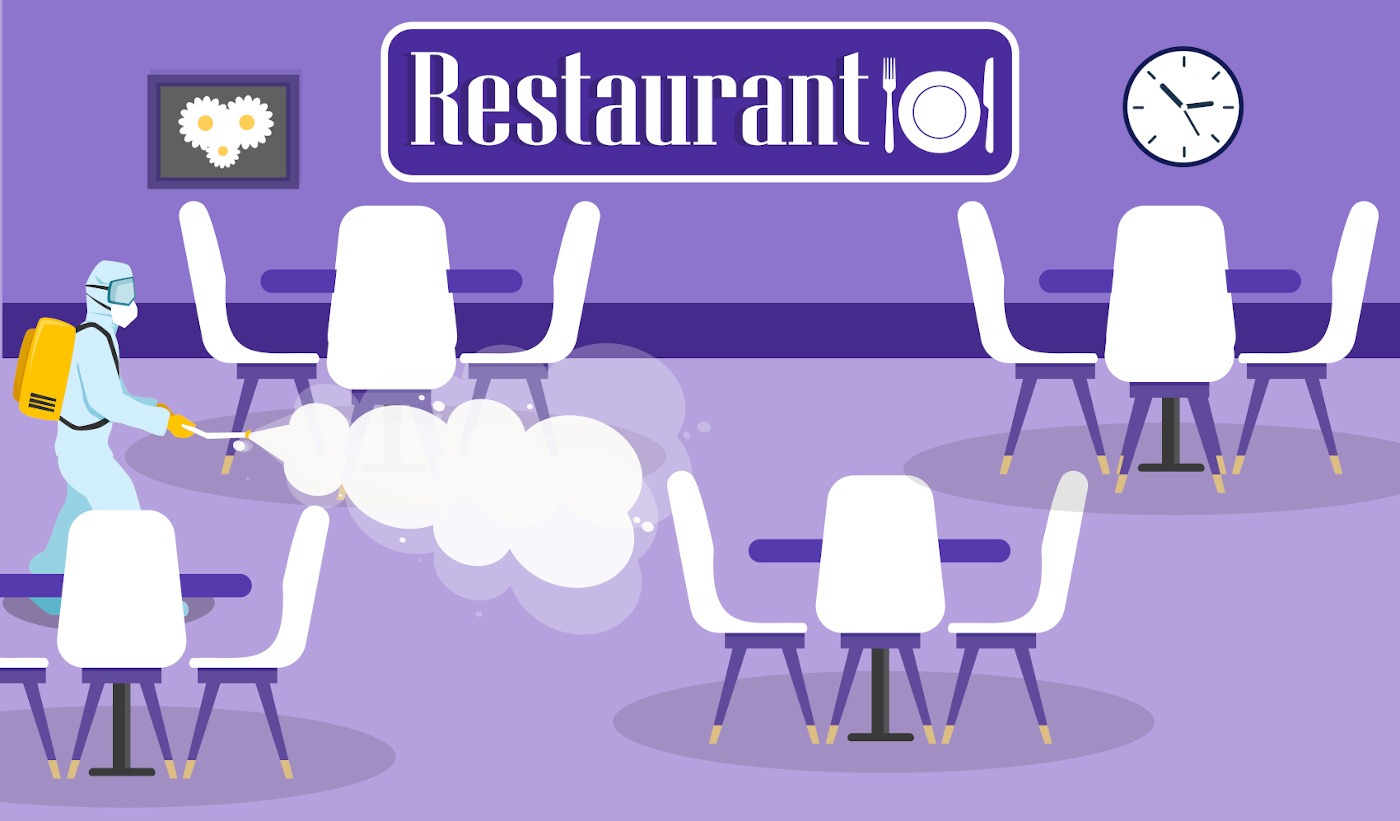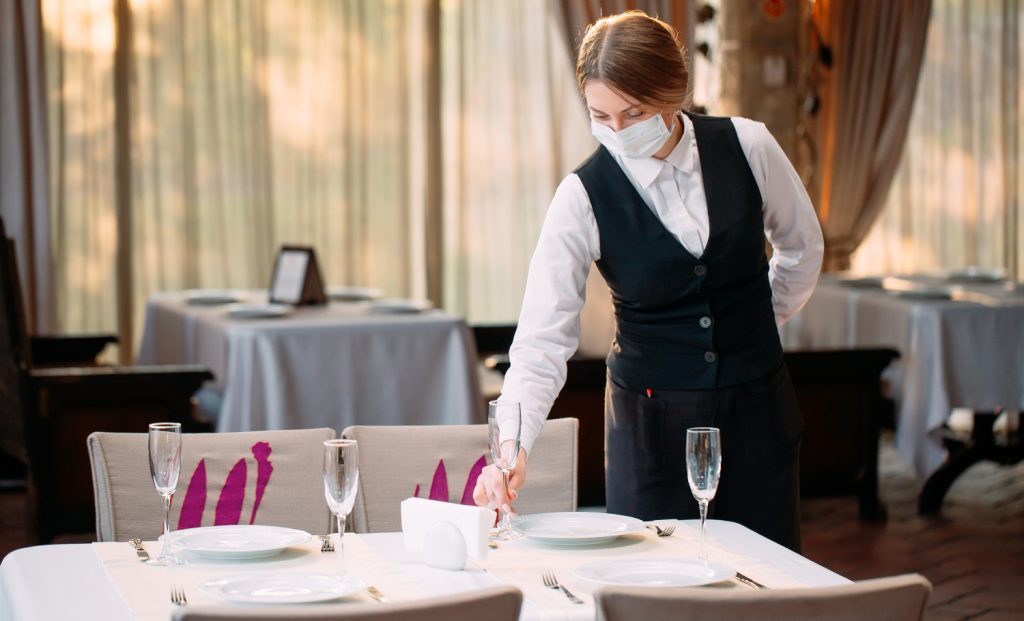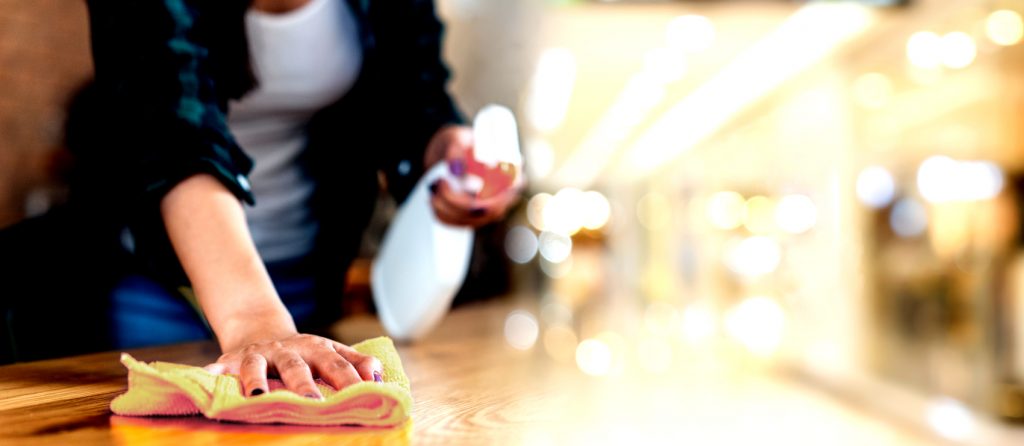Thinking of Offering Restaurant Cleaning Services? Here's Your Guide
 ' loading="lazy" >
' loading="lazy" >
Last week we put out a guide for janitorial companies tackling cleaning in the fitness industry, and the nuances of re-opening in that particular sector. This week we’ve done our homework, and gathered highlights from one of the most demanding consumer industries when it comes to sanitation…you guessed it…
Offering Restaurant Cleaning Services
Anyone who has ever so much as worked in the restaurant biz knows that even a waiter needs to have training like OSHA (Occupational Health and Safety Administration) in the USA and WHMIS (Workplace Hazardous Materials Information System) in Canada, as well as mandatory Food Handler Safety Certification. So you can just imagine that as we enter a post-pandemic world, the requirements and quality expected of commercial cleaning companies who have the food industry as a client will be impressively high!

It Can Be Hard to Add New Cleaning Business Lines like Restaurant Cleaning Services
We’ve gathered as much helpful information here to mitigate all the legwork you would have to do to start wrapping our head around the requirements of restaurant cleaning that will be asked of you.
As we’ve mentioned before, no two industries will be requiring the same formula for creating the safest environment for members of the public, so we are e dedicating a blog to key sectors we know our customers serve regularly with hopes of equipping janitorial company owners with the most relevant information possible to help them with the difficult task of being bonafide heroes as the world re-opens.
Here are some of the more important highlights we have seen across food service-related sectors:
Restaurant Cleaning Services Tip # 1 - Use recommended cleaning procedures
So here are the real meat and potatoes when it comes to expectations of janitorial service providers. It is expected that the coronavirus that causes COVID-19 is, like other coronaviruses, also susceptible to EPA-registered sanitizers and disinfectants. Special processes beyond routine cleaning and sanitizing are not recommended at this time.
Restaurant Cleaning Services Tip # 2 - Remember, cleaning and sanitizing are not the same
Clean with soap and water to remove dirt and food from surfaces. Sanitize with chemicals or heat to reduce germs. Surfaces that look clean may still have germs on them that you can’t see. Sanitizing reduces these germs to safer levels.
Restaurant Cleaning Services Tip # 3 - Clean and sanitize surfaces that are frequently touched
Surfaces such as remote controls, kitchen counters, doorknobs, bathroom surfaces, keyboards, tables and chairs, faucet handles, tabletops, menus, phones and tablets, the outside of condiment containers, and other items are frequently handled. Follow the product/ solution instructions to determine how long the surface needs to be saturated for it to be effective.
Food-contact surfaces
All food-contact surfaces should be washed, rinsed, and sanitized after each use.

Only use sanitizers registered with EPA as a sanitizer
Read the sanitizer label and follow usage directions. Be sure to measure the concentration of the sanitizer with test strips to make sure the active ingredient is available.
The EPA, again
again, has a list of registered sanitizers labeled for use against the novel coronavirus. Note: There may be additional disinfectants that meet the criteria, and EPA will update the list as needed.
If you have questions
about your specific sanitizer, please carefully read the package label or reach out to your chemical supplier for more information. If you have more broad-ranging questions, please refer to your province or state's recommended sanitation and disinfection procedures and recommended products. Please take care to remember that not every state or province will have the same regulations.

If you use disinfectant wipes
Follow the recommended use directions closely. Do not reuse the wipes to wipe down multiple surfaces. Throw used wipes in the trash.
Cloth-Face Covering Requirement
Establishments must adjust operations and implement these practices not just to remain operating, but to ensure safety of patrons and employees. Aside from respirators, many businesses are investing in Plexiglass Protective Screens in paying and service areas. It is required by most states and provinces to ensure food safety provisions are followed for take-out and delivery service as well.
Establishments should follow these additional measures to reduce contact and unnecessary risk:
Implementing best practices
for retail food stores, restaurants, and food pickup/delivery during and after pandemic. And for the foreseeable future.
Have employees wear cloth face coverings.
for retail food stores, restaurants, and food pickup/delivery during and after pandemic. And for the foreseeable future.
Discontinuing self-serve operations
such as continental breakfast, salad bars, buffets and dispensers.
Make sure alcohol-based hand sanitizer is available for customers
As well as wait staff, bartenders, management, etc. Especially if there is no soap and water
Everyday Preventive Measures
Person-to-person spread of the virus is suspected to occur mainly via respiratory droplets produced by infected persons (coughing or sneezing). Even though much is still unknown about how the virus spreads, it is important that employees occupying these spaces take these everyday preventive actions to help stop the spread of germs
Hands Free
Whenever possible, use contactless forms of payment and check-in. Janitorial companies need to take note of contact points in order to focus where to concentrate disinfecting efforts. This isn’t limited to cash registers, doors, and equipment are obviously a large focus too.
Take all Other Appropriate Measures
Restaurants and food service establishments must verify that the disinfectant(s) they use are effective against SARS-CoV-2 (the virus that causes COVID-19). To do this, either:
a) Use the list on the CDC (Center for Disease Control) or Health Canada’s website to identify if a disinfectant has been reviewed and confirmed to be effective against SARS-CoV-2.
b) Use the list on the EPA’s website to identify if a disinfectant has been reviewed and confirmed to be effective.
c) Contact the disinfectant supplier or manufacturer to identify if the disinfectant has been confirmed to be effective and, follow the manufacturer instructions for disinfection including contact times.
d) Make a 500-parts per-million chlorine disinfectant solution using bleach and water. To make a solution of this concentration: mix 1 part bleach to 100 parts water (e.g. mix 10 ml bleach (5.25%) with 990 ml water). When the solution is applied do not wipe it off, instead, allow it to air dry.


